When It Turns Cold, Aphids Grow Wings!
When my neighbors trees were swamped with tiny yellow-green insects, I thought these were certainly aphids. Checking for information on why he had 10,000 per branch on the trees in his front yard, I was astounded by how little I knew about these curious little insects.
My neighbor and my husband both were telling me about some tiny bugs that were all over his trees, fence, grass….basically covering all the surfaces where ever you might look. I finally did go over and take a look because I got curious when they were saying how much there were.
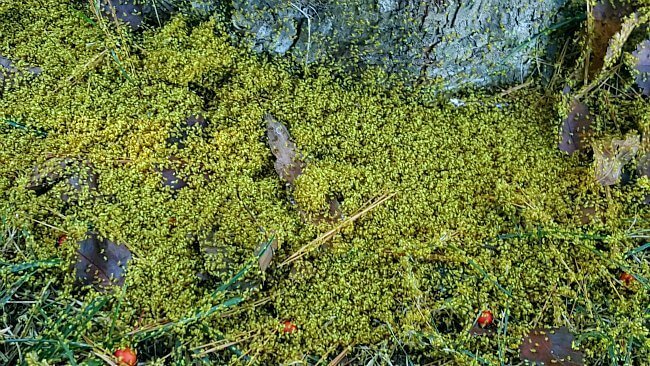
That photo above is the base of a winter hawthorn tree. Yes, the bugs, which I identified as aphids, were an inch deep at the base of the trunk of the tree, and coating the trunk as far as I could see.
Also the branches and leaves on the ground, and the grasses under our feet. In fact, we were crushing them as we walked!
They were even on my feet…..I was in sandals, flip-flops, ask anyone….I am almost always in flip-flops.
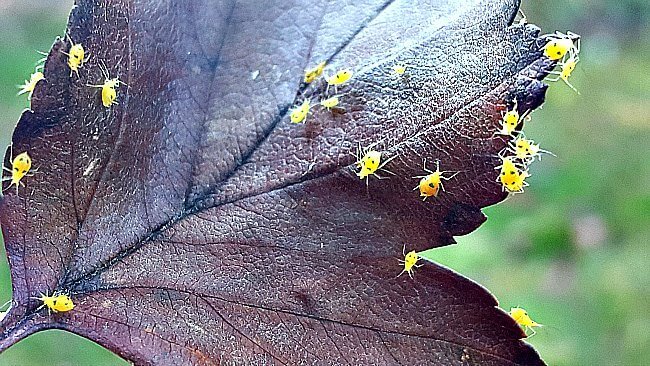
The photo at the top of this article is a portion of the trunk of the tree which is covered in the aphids. I have never seen anything like this.
Sure, I have had aphids on a plant, but those are usually a bunch under a leaf near the crook of a stem or branch.
How to kill aphids?
Usually I just use a bottle of mild soap and give it a squirt which flings them off the plant…..if not rupturing the little soft body and killing it. This is what I would call organic aphid control, since it doesn’t use any insecticides or chemical to harm beneficial insects.
There are insects that feed on aphids. Natural enemies are soldier beetles, lacewing larvae, ladybugs, and ladybug larvae. Some parasitic wasps and crab spiders also help us keep the population of aphids under control. So don’t squish that crab spider. Put her in your garden.
So these insects in your garden will help to control the population of aphids in your garden. If you use insecticide, you may kill off some good bugs along with the aphids, so be careful if you decide to go the chemical route.
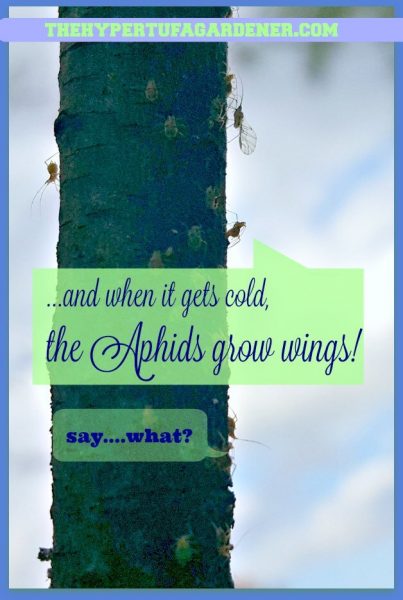
Aphids are also called plant lice or greenflies. They live by sucking the sap out of plants until the plant dies and then move on to another plant. These insects can do great damage to our gardens and to agriculture in general.
“Aphids are among the most destructive insect pests on cultivated plants in temperate regions.” Ref: George C. McGavin (1993). Bugs of the World.
Aphids secrete honeydew which ants eat. But when the honeydew is left on the plant, it often turns black due to sooty mold fungus. Aphids can also carry viruses from one plant to another.
How Aphids Reproduce – Strange !
Aphids reproduce by giving birth to live young. The females are viviparous. So her offspring arrive ready to jump on the nearest leaf and start sucking out the sap. The mothers do not need a male but can reproduce asexually. This is called parthenogenesis which is one reason they are so prolific.
The life cycle skips a few steps so it can happen very quickly. Throughout the season, no eggs need to wait to hatch and no male is needed to mate.
Just eat and make clones. The strange life of an aphid!
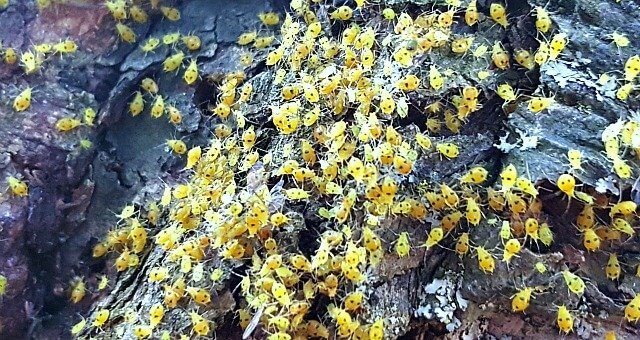
In our temperate weather, lower temperatures signal the female to start producing males and winged insects. ( This can also occur if overcrowded or low food supply.) Then the insects can fly away, mate, lay eggs and start the cycle all over again in the spring or in a new location where plants are more available to them. See what I mean by efficient?
In some areas where winters are not severe, the aphids can continue to reproduce asexually and no egg stage is needed. But you can see from my photograph of the aphids next door, that these are beginning to develop wings now, and will soon fly away to another plant to overwinter.
Probably right next door to my house….<sigh>


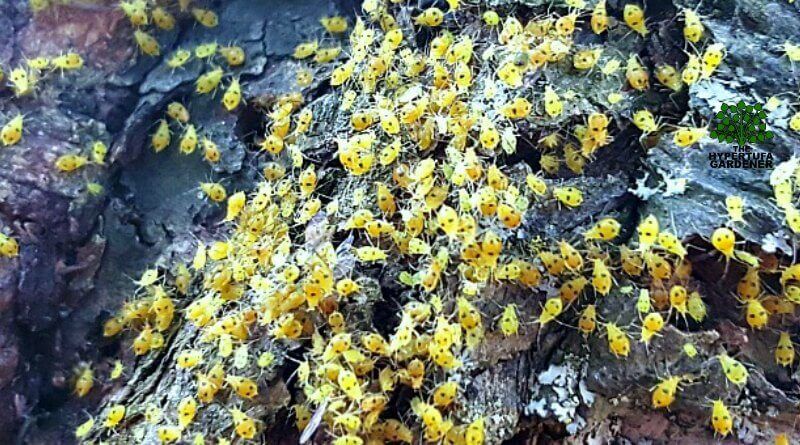
Soooo, how does one get rid of the aphids in this case? I believe this a problem at my daughters on a huge hackberry tree in her years.